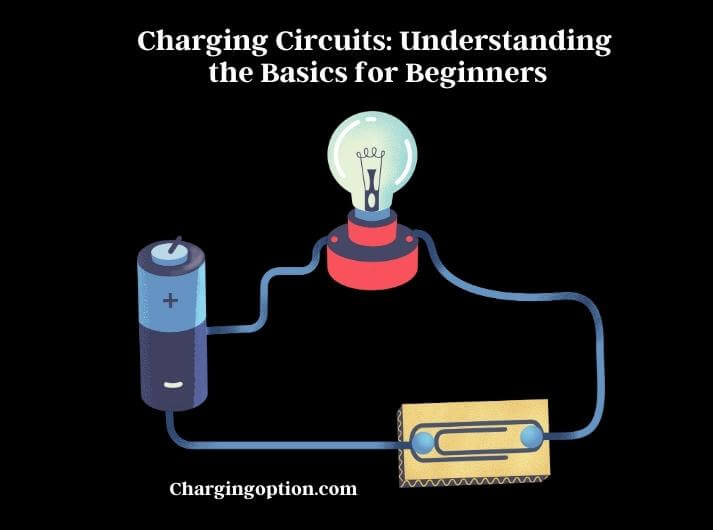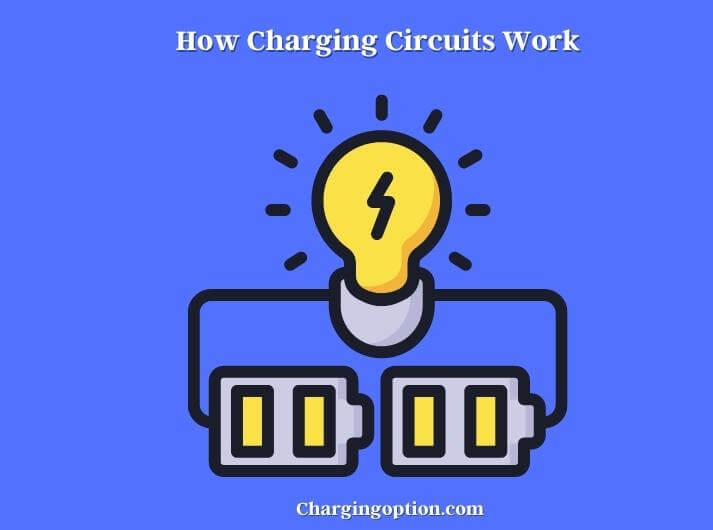In today’s world, we rely heavily on electronic devices, and their performance largely depends on the power supply they receive. Charging circuits are essential components that enable these devices to recharge quickly and efficiently. They play a vital role in various applications, such as mobile phones, electric vehicles, and portable electronic devices. Charging circuits is essential for designers, engineers, and anyone interested in the field of electronics.

The importance of charging circuits cannot be overstated. Without them, electronic devices would be limited in their battery life, and recharging them would be a cumbersome process. Charging circuits ensure that the battery receives the correct voltage and current, preventing overcharging and damage to the battery. They also regulate the charging process, ensuring that the battery is charged quickly and efficiently.
Charging Circuits
A charging circuit is an electronic circuit that is designed to recharge a battery or other energy storage device by converting an external power source (such as AC power from a wall outlet or DC power from a solar panel) into the appropriate voltage and current needed to charge the battery.
Charging circuits are commonly used in a wide range of applications, including mobile devices, electric vehicles, power tools, and renewable energy systems. These circuits typically include components such as transformers, rectifiers, voltage regulators, and control circuitry to ensure the safe and efficient charging of the battery.
Types of Charging Circuits
There are different types of charging circuits, each with its advantages and disadvantages. The choice of charging circuit depends on the device’s requirements, battery chemistry, and the user’s needs. Here are the four main types of charging circuits:
Constant Voltage Charging Circuit
Constant voltage charging circuits are the most common type of charging circuit. They maintain a constant voltage until the battery is fully charged, after which the current drops off. The voltage is typically set to the battery’s maximum voltage, and the current is reduced as the battery becomes fully charged.
Constant voltage charging circuits are simple, inexpensive, and easy to implement. They are suitable for charging lead-acid batteries and nickel-cadmium batteries.
Constant Current Charging Circuit
Constant current charging circuits maintain a constant current until the battery reaches a specific voltage. The current is typically set to the battery’s maximum charging current, and the voltage increases as the battery become charged. Constant current charging circuits are suitable for charging lithium-ion batteries and other batteries with a high charge rate.
Fast Charging Circuit
Fast charging circuits supply high currents to recharge the battery quickly. They can charge the battery in a fraction of the time compared to other charging circuits. Fast charging circuits are suitable for electric vehicles, where fast charging is essential. Fast charging can cause the battery to degrade faster, reducing its lifespan.
Trickle Charging Circuit
Trickle charging circuits provide a low current to maintain the battery’s charge. They are suitable for applications where the battery is not in use for long periods, such as emergency lighting or standby power. Trickle charging circuits can extend the battery’s lifespan by preventing self-discharge.
Charging Circuit Topologies
Charging circuits can be designed using different topologies, each with its advantages and disadvantages. Here are the most common charging circuit topologies:
Linear Charging Circuit:
Linear charging circuits are simple and inexpensive circuits that use linear regulators to control the charging current and voltage. They are suitable for low-power applications and low charging current rates. The linear charging circuit is inefficient since the excess energy is dissipated as heat, reducing its efficiency.
Switching Charging Circuit
Switching charging circuits use a switch-mode power supply to regulate the charging current and voltage. The switching circuit is more efficient than linear charging circuits since it switches the current on and off to maintain the desired voltage and current levels. Switching charging circuits are suitable for high-power applications and high charging current rates.
Inductive Charging Circuit
Inductive charging circuits use an electromagnetic field to transfer power wirelessly to the device’s battery. The charging process occurs when the device is placed on the charging pad, and the magnetic field induces a current in the device’s coil, which charges the battery. Inductive charging circuits are convenient and eliminate the need for wires, but they are less efficient than wired charging circuits.
Solar Charging Circuit
Solar charging circuits use solar panels to generate electricity and charge the battery. Solar charging circuits are suitable for outdoor applications, such as solar-powered lights, and remote monitoring devices. Solar charging circuits require a larger solar panel to generate enough power to charge the battery.
Switching charging circuits are more efficient and suitable for high-power applications. Inductive charging circuits eliminate the need for wires but are less efficient. Solar charging circuits are suitable for outdoor applications, but require a larger solar panel to generate enough power.
How Charging Circuits Work?
Charging circuits work by regulating the voltage and current supplied to the battery, ensuring that the battery is charged efficiently and safely. Here is a brief overview of how charging circuits work:

Current Regulation
The charging circuit regulates the current supplied to the battery by controlling the voltage across a resistor or other current-sensing element. The current sensor measures the current flowing to the battery, and the charging circuit adjusts the voltage to maintain the desired current level.
Voltage Regulation
The charging circuit regulates the voltage supplied to the battery by adjusting the current through a feedback mechanism. The charging circuit measures the battery’s voltage and adjusts the current to maintain the desired voltage level.
Charging Modes
The charging circuit may have different charging modes, such as constant voltage, constant current, or a combination of both. In constant voltage charging mode, the charging circuit supplies a constant voltage to the battery, and the current decreases as the battery becomes fully charged. In constant current charging mode, the charging circuit supplies a constant current to the battery, and the voltage increases as the battery become fully charged.
Safety Features
The charging circuit may have safety features to prevent overcharging, overheating, and short circuits. The charging circuit may include a temperature sensor to monitor the battery’s temperature and adjust the charging rate accordingly. The charging circuit may also include a timer to prevent overcharging, which can cause the battery to degrade faster.
Benefits of Charging Circuits
Charging circuits offer several benefits, including:
Efficient Charging
Charging circuits are designed to convert the incoming power to the optimal voltage and current required to charge the battery, which ensures efficient charging and reduces the time required to charge the battery.
Protection
Charging circuits typically include safety features such as over-voltage protection, over-current protection, and thermal protection to prevent damage to the battery or the charging circuit itself.
Compatibility
Charging circuits can be designed to be compatible with different types of batteries, such as lithium-ion, nickel-cadmium, or lead-acid batteries.
Portability
Charging circuits can be designed to be compact and lightweight, making them suitable for portable devices such as smartphones, laptops, and electric vehicles.
Cost-Effective
Charging circuits can be more cost-effective than buying new batteries, as they can extend the life of existing batteries by charging them efficiently and safely.
If you are experiencing Remington shaver not charging solutions, basic circuit knowledge can help troubleshoot the issue. Start by checking the power source, the charging cable, and the shaver’s connections. How the circuit works can help you identify and fix any issues that may be causing the charging problem.
If you are experiencing Remington shaver not charging solutions, basic circuit knowledge can help troubleshoot the issue. Start by checking the power source, the charging cable, and the shaver’s connections. Understanding how the circuit works can help you identify and fix any issues that may be causing the charging problem.
Wrap Up
Charging circuits are an essential component of battery-powered devices, ensuring that batteries are charged safely and efficiently. The different types of charging circuits and topologies is crucial for selecting the appropriate charging circuit for a specific application.
Linear charging circuits are simple and inexpensive, but inefficient for high-power applications. Switching charging circuits are more efficient and suitable for high-power applications. Inductive charging circuits eliminate the need for wires but are less efficient. Solar charging circuits are suitable for outdoor applications but require a larger solar panel to generate enough power.
Charging circuits regulate the voltage and current supplied to the battery to ensure that it is charged efficiently and safely. They may have different charging modes and safety features to prevent overcharging, overheating, and short circuits.
